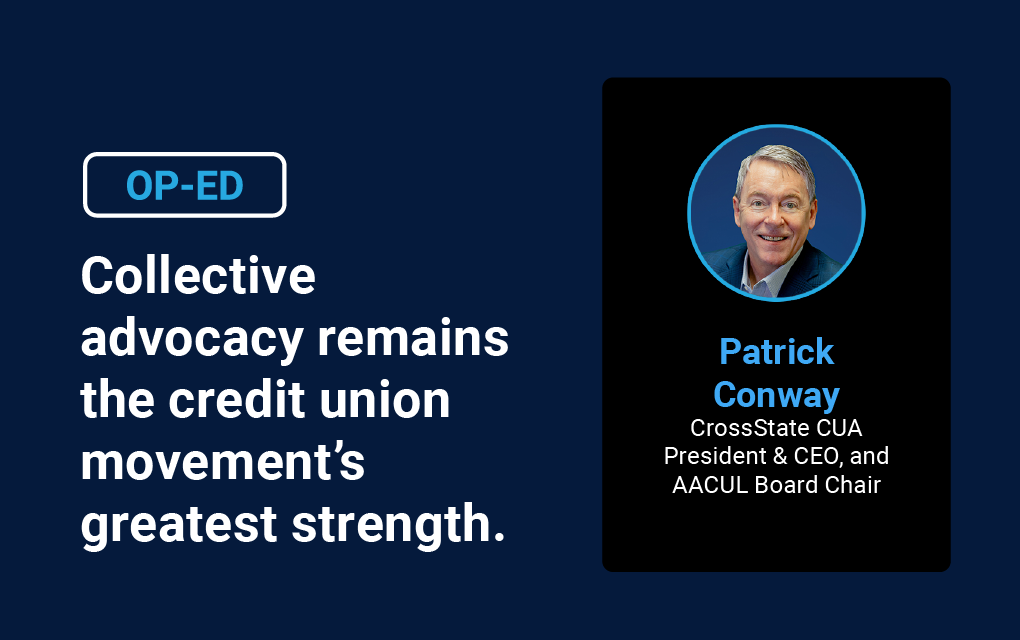Were the Harper and Otsuka firings a ‘canary in the coal mine?’
The most seismic day in the history of the National Credit Union Administration board took place on April 16th when board members Todd Harper and Tanya Otsuka were fired by President Trump.
Their firings leave the NCUA board with a single member, Chairman Kyle Hauptman. In 2002, a similar situation occurred when Chairman Dennis Dollar was the sole board member. At the time, Dollar undertook administrative actions, signed documents on behalf of the board, and ensured that the agency was fulfilling its role in terms of safety and soundness. The only thing that was not done was approval of any regulations.
Should they choose to, both Harper and Otsuka could take the Administration to court. This will cost money and take time. Will they be willing to bear the costs? How long will the legal process take to play out? And what might final relief look like? Washington insiders posit that the reason for the regulatory board firings is to put a target on the back of Fed Chairman Powell. Much like a canary in a coal mine, if the FTC, NCUA and NLRB firings stick, the chance of a Powell firing being overturned is reduced or even eliminated.
Reducing staff to satisfy the Department of Government Efficiency (DOGE) initiatives was one of the biggest issues confronting NCUA…until the Harper and Otsuka firings. Since the Inauguration, federal workers have seen the impact that DOGE has had on federal agencies and their employees. NCUA is no different. The White House required all federal agencies “to work with DOGE to ensure transparent government spending.” NCUA has yet to officially release the cutback plan, but it most likely includes:
- An offer to all employees to accept administrative leave through the end of the year, with pay. If an employee accepts this offer, they will depart the agency once all current work is finished and the offer must be accepted by May 5.
- For any retirement-eligible employees, they would be offered a bonus – reportedly $50,000 – and they would then retire. They would not be put on administrative leave.
- The goal would be to reduce staff by 18-20%. If the agency could not get to this level through voluntary acceptances, a reduction in force (RIF) would be necessary.
Previously, there have been a couple of occasions when NCUA reduced staff. When Ed Callahan was chairman, the agency cut staff and was highlighted by a mention in the Grace Commission report, which was President Reagan’s program to reduce government. The NCUA also undertook the Accountability in Management (AIM) initiative under Chairman Dennis Dollar. It is important to note that both efforts were done before NCUA was unionized. Having to work through the union labor process may have an impact on how quickly this can be done this time around.
The precedent that may determine the fate of Harper and Otsuka is the 1930’s Supreme Court decision in the case of Humphrey’s Executor vs. the United States.
In 1935, the Supreme Court ruled that the President could not remove an executive of a quasi-legislative or quasi-judicial administrative body for reasons other than that allowed by Congress. This decision was unanimous. In that case, President Coolidge had appointed William Humphrey as a member of the Federal Trade Commission (FTC); and when President Franklin Roosevelt took office and fired Humphrey, the Court ruled that the firing was improper.
The Court opined that the FTC both adjudicated and promulgated rules so it was not strictly a branch of the Executive Office. Promulgating rules makes it similar to the legislative branch while the enforcement of those rules makes it similar to the judicial branch. The Court ruled that Roosevelt’s decision to fire Humphrey was based solely on political differences.
The future of Humphrey does not look good.
In early April, Supreme Court Chief Justice John Roberts issued a stay that allowed the Administration’s request to fire a member of the National Labor Relations Board and a member of the Merit Systems Protection Board. This may signal that Roberts feels that a majority of the Court would side with the President and allow the firings to stand.
Geoff Bacino is a credit union consultant and former board member of the National Credit Union Administration.
Disclaimer
The views, opinions, and perspectives expressed in articles and other content published on this website are those of the respective authors and do NOT necessarily reflect the views or official policies of Tyfone and affiliates. While we strive to provide a platform for open dialogue and a range of perspectives, we do NOT endorse or subscribe to any specific viewpoints presented by individual contributors. Readers are encouraged to consider these viewpoints as personal opinions and conduct their own research when forming conclusions. We welcome a rich exchange of ideas and invite op-ed contributions that foster thoughtful discussion.









